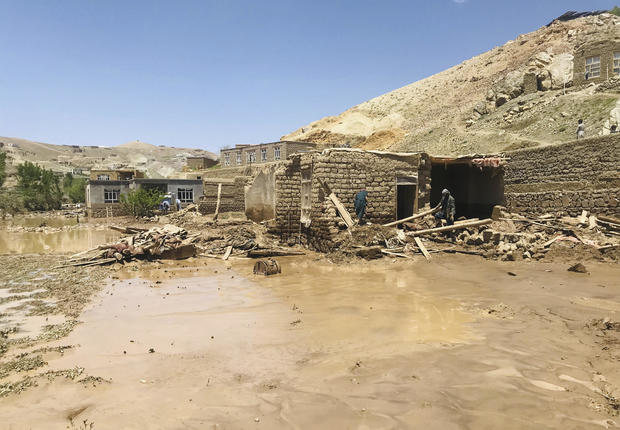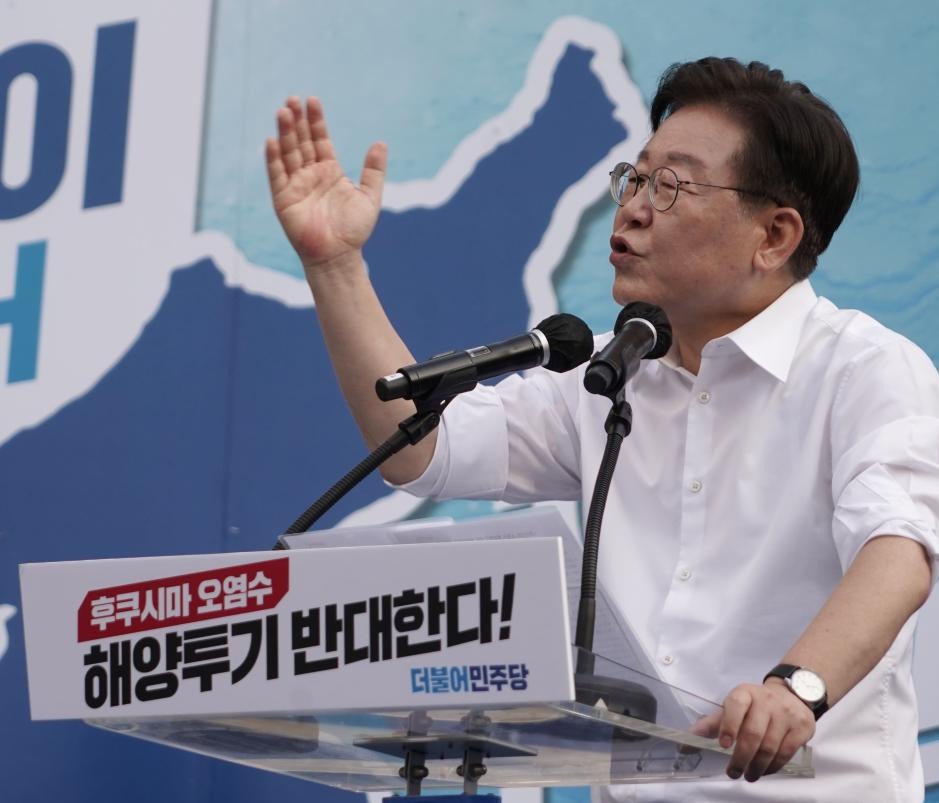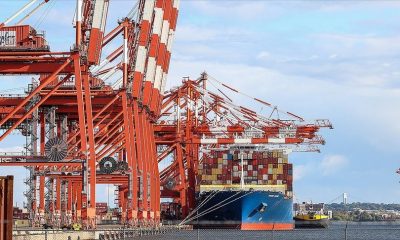ASIA
From climate change to “foreign conspiracy”; Recent floods left 60 dead in Afghanistan

The devastating floods in the past few days have taken the lives of many people and affected huge financial losses in a number of provinces across Afghanistan.
The destruction of public roads, demolishing of agricultural crops and the loss of thousands of citizens of the country are other consequences of the storm and heavy rains in the provinces of Nangarhar, Kunar, Panjshir, Kapisa and Maidan Wardak.
The Taliban have confirmed that 47 people were killed and more than 350 others were injured as a result of floods and severe storms in Nangarhar province. Around 10 people were also killed in Kapisa and Kunar provinces.
The United Nations High Commissioner for Refugees (UNHCR) said that a large number of displaced people and migrants were living in the flooded areas of Nangarhar.
However, the Washington Post has reported that Afghanistan is dealing with climate change on its own, while the Taliban see natural disasters as the work of God or foreign conspiracies.
Afghanistan is one of the most vulnerable countries to climate change.
It has been reported that Afghanistan is one of the most vulnerable countries to climate change with very little global attention and local capacity to deal with it.
Indeed, the recent storm with heavy rains were unprecedented in the history of Afghanistan.This disaster is the latest in a series of extreme weather events that have plagued the country in recent years, including severe droughts, extreme temperatures, and flash floods.
Unfortunately, these recurring catastrophes underscore the harsh reality of climate change, with Afghanistan standing on the front line, bearing the brunt of its impacts.
Head of natural disaster management authority, Saifullah Khalid said that over 400 houses, 60 electricity poles, and many agricultural lands were destroyed in the recent storms and heavy rains.
Strong winds, storms and heavy rains have also killed 11 members of a family in Sarkhrood district of Nangarhar province. The incident took place on Thursday. The relatives of this family said they were gathered to celebrate the birth of a baby when suddenly a storm hit the district and as a result 11 people died.
The victims have described the storm and heavy rain in this province as unprecedented and asked the government to help them as they lost almost everything.
The areas affected by the floods hosted a large number of displaced people and returnees.
On the other hand, the pictures and videos circulating in the media show some areas of Panjshir province which were badly hit with storms and heavy rains that resulted in destruction of people’s gardens and agricultural lands. Roads were also damaged causing the blockage of traffic.
On the other hand, Taliban local officials in Kapisa said that three people lost their lives to the floods and many other villagers received financial losses.
The flood in Maidan Wardak province has also destroyed hundreds of acres of agricultural land and dozens of gardens and caused huge financial losses to the residents of the province.
At the same time, the UNHCR said that the areas affected by the recent floods in Nangarhar hosted a large number of displaced people and returnees. This organization said that their staff reached the area and are currently helping the affected families.
However, Najibullah Sadid, an environmental expert has posted a satellite image and said that it shows the extent of flooding in Sarkhrood and Sultanpur districts which was severe.
As predicted, a strong monsoon prevails in the Indian subcontinent this year, and due to its effect, it is possible that the region and eastern Afghanistan will witness destructive floods, according to Najiubllah.
Long drought in Afghanistan has hardened the soil so that flash floods are more severe and its damage is much greater.
The new climatic conditions require a continuous and effective struggle, otherwise the living conditions of the people will become more difficult day by day.
Meanwhile, the United Nations World Food Program said that Afghanistan is the sixth most vulnerable country due to climate change and natural events.
Meanwhile, the Washington Post has reported that Afghanistan is dealing with climate change alone. According to the report, Afghanistan due to its policy to stop girls from schools and other education facilities is deprived of foreign financial aid for necessary measures such as adapting to climate change.
It also reported that the Taliban are arguing that natural disasters in Afghanistan are “the work of God or a foreign conspiracy”. The report states that Afghanistan is currently dealing with the effects of global warming alone, and the Taliban blame the floods and poor government management on foreigners.
In his speech at the conference in Jalalabad, the capital of Nangarhar province, which was held on the occasion of climate change, Taliban Deputy Minister of Higher Education Lutfullah Khairkhah said: “Just as they attacked our country, they also attacked our climate. We must defend our climate, our water and our soil in the same way as we defend ourselves against invasion.”
UN Assistant Secretary-General and Regional Director for Asia and the Pacific, Kanni Wignaraja, said that the long drought in Afghanistan has hardened the soil so that flash floods are more severe and its damage is much greater.
ASIA
Xi urges global CEOs to safeguard trade and supply chains

Chinese President Xi Jinping, in a meeting with a group of executives including Rajesh Subramaniam from FedEx and Bill Winters from Standard Chartered, called on global business leaders to work together to protect supply chains.
Amid a deepening trade war with the US, the Chinese leader told the group of foreign business leaders, including Pascal Soriot from AstraZeneca and Miguel Ángel López Borrego from Thyssenkrupp, that they should resist behaviors that “turn back” history.
Speaking at the meeting held in Beijing on Friday, Xi said, “We hope everyone will have a broad and long-term perspective and not blindly follow actions that disrupt the security and stability of global industrial and supply chains, but instead add more positive energy and certainty to global development.”
The event at the Great Hall of the People marked the second consecutive year that Xi held a carefully arranged meeting with foreign CEOs in the Chinese capital. Last year’s event involved only US business leaders.
The meeting took place at the end of a busy week for Chinese policymakers, who are striving to strengthen relations with the international business community amid rising tensions with the administration of US President Donald Trump.
China’s leading annual CEO conference, the China Development Forum, was held earlier this week in Beijing, followed by the Boao Forum for Asia on the tropical resort island of Hainan.
Beijing is trying to present itself as a bastion of stability in global trade, in contrast to the US, where Trump has launched successive waves of tariffs on many products, from aluminum to automobiles.
Trump pledged on April 2 to impose broad and reciprocal taxes on US trade partners.
ASIA
Trump’s potential auto tariffs worry Japan and South Korea

Following US President Donald Trump’s announcement that he would impose a 25% tariff on imported cars and auto parts, Japan’s Prime Minister sounded the alarm on Thursday.
Prime Minister Shigeru Ishiba told lawmakers during a parliamentary session, “We need to consider appropriate responses,” adding, “All options will be on the table.”
This move, seen as undermining a bilateral agreement made between Trump and then-Prime Minister Shinzo Abe in September 2019, came as a surprise to Japan. This limited trade deal had opened Japan’s market to more American agricultural products. The agreement states that the two countries “will refrain from taking measures contrary to the spirit of these agreements.”
Japanese automakers reacted cautiously to the announcement. Toyota, Subaru, Mazda, and Honda issued brief statements saying they were assessing the potential impact.
Imported cars and trucks are currently subject to tariffs of 2.5% and 25%, respectively. When the new tariffs take effect on April 3, these rates will rise to 27.5% and 50%. The 25% tariff will also apply to automotive parts like engines and transmissions, taking effect no later than May 3.
Japan’s Chief Cabinet Secretary Yoshimasa Hayashi said the government intends to negotiate exemptions. Economists say it is unclear how exemptions might be secured, but there are several options.
According to economists, options Japan might consider include voluntary export restraints, a commitment to increase imports of items like natural gas, grain, and meat, and replacing Russian natural gas with gas from the US. In 2023, 8.9% of Japan’s natural gas imports came from Russia, while 7.2% came from the US.
“Japan will likely be looking at all these options,” said Koichi Fujishiro, a senior economist at the Dai-ichi Life Research Institute.
South Korea in a similar situation
South Korea is also expected to seek exemptions. Analysts said that South Korean automaker Hyundai Motor Group’s announcement earlier this week of a $21 billion US investment would help its negotiating position.
Esther Yim, a senior analyst at Samsung Securities, said, “The US has, in principle, applied a 25% tariff on all imported cars,” adding, “Washington can then negotiate with each country, and I think investment can be used as leverage.”
South Korea’s Ministry of Industry pledged an emergency response by April to help the country’s automakers, who are expected to face “significant challenges” when the tariffs take effect.
Over the years, global automakers have shifted to local production to avoid trade friction. According to the Mitsubishi Research Institute, 60% of Japanese cars sold in the US are produced in the US. This figure drops to 40% for Korean cars. For European brands, the rate is as high as 70%.
Although Ishiba insists all options are on the table, few analysts expect Japan to resort to retaliatory measures, at least at this point. “Japan would gain very little by retaliating against US tariffs,” Fujishiro said.
At a summit with Trump in February, Ishiba pointed out that Japan is the largest investor in the US and a significant job creator, promising to work towards increasing Japan’s investment balance from $783.3 billion in 2023 to $1 trillion.
Cars, Japan’s largest export item to the US, are worth 6 trillion yen ($40 billion) and will account for 28% of Japan’s total exports in 2024. This amount is equivalent to 1% of Japan’s nominal gross domestic product.
Takahide Kiuchi from the Nomura Research Institute estimates that a 25% tariff would reduce Japan’s car exports to the US by 15% to 20% and lower Japan’s GDP by 0.2%.
If Japanese automakers try to respond by shifting production to the US, this would reduce domestic employment and hollow out the country’s economy in the long run.
Masanori Katayama, chairman of the Japan Automobile Manufacturers Association, said at a press conference last week, “Car exports from Japan are necessary to supplement the domestic production of Japanese automakers and to provide a lineup of attractive cars… to meet the diverse needs of American customers through car dealerships in every US state.”
Katayama said that when the US implements the tariff, “a significant production adjustment is expected. The Japanese auto industry consists not only of automakers but also parts suppliers and employs 5.5 million people.”
Katayama insisted that the industry and the Japanese government must come together to take action and keep domestic supply chains intact.
The tariffs are also expected to harm American automakers because they too source parts and manufacture globally to keep costs down and make their cars competitive in the market.
Nomura analyst Anindya Das said General Motors could fall into an operating loss on an annual basis due to its reliance on factories in Mexico. He added that Toyota could also see a 30% drop in operating profit.
Jennifer Safavian, president and CEO of Autos Drive America, an industry group representing international automakers operating in the US, including Toyota, Honda, Nissan, and others, said, “Tariffs imposed today will make it more expensive to produce and sell cars in the US, ultimately leading to higher prices, fewer choices for consumers, and fewer manufacturing jobs in the US.”
ASIA
South Korean opposition leader Lee Jae-myung acquitted in election law case

A court in South Korea on Wednesday overturned a lower court’s decision, ruling that the main opposition party leader is not guilty of violating election law. If this decision is upheld, it will pave the way for him to run in the next presidential election.
Prosecutors can appeal the decision, which could take the case to the Supreme Court, South Korea’s highest judicial body.
Speaking outside the court after the ruling was announced, Lee Jae-myung thanked the court for the decision, which he described as “the right decision.”
The charges against Lee stem from remarks he made in 2021 while competing in his party’s presidential primary, where he allegedly denied knowing one of the key figures in a real estate development scandal. The scandal involved a redevelopment project in Seongnam city, where Lee was mayor. Prosecutors allege Lee lied about his relationship with businessman Kim Moon-ki to conceal his own culpability in the real estate deal.
Immediately after the court’s decision was announced, Kweon Seong-dong, leader of the ruling People Power Party, called the ruling “regrettable” and urged the Supreme Court to quickly decide the case.
Lee, a trained lawyer and experienced politician, lost the 2022 presidential election by the narrowest margin in South Korea’s democratic history to now-impeached President Yoon Suk Yeol.
Yoon, Lee’s fierce rival, is awaiting a Constitutional Court ruling on his impeachment over charges of leading an insurrection in December. Lawmakers voted to impeach Yoon following his attempt to declare martial law in early December, which he claimed was necessary to protect South Korea from opposition “anti-state forces.” The measure was quickly rejected in the National Assembly, but the attempt triggered a political crisis that continues months later.
The Constitutional Court completed hearings on Yoon’s case late last month and is expected to deliver its verdict within days, although no official date has been announced. If the court finds Yoon not guilty, he will be immediately reinstated. If found guilty, an early election will be held within 60 days.
Data released last week by polling firm Gallup Korea showed Lee as the leading choice among potential candidates for the next presidential election. Lee, with a support rate of 36%, was far ahead of the number 2 likely candidate, conservative Labor Minister Kim Moon-soo.
Yoon’s impeachment delay: Legal rigour or political deadlock?
-

 EUROPE5 days ago
EUROPE5 days agoF-35 debate intensifies across Germany and Europe
-

 EUROPE1 week ago
EUROPE1 week agoEurope plans for US absence in NATO with 5-10 year strategy
-

 ASIA2 weeks ago
ASIA2 weeks agoChina’s AsiaInfo expands with DeepSeek-powered AI
-

 EUROPE2 weeks ago
EUROPE2 weeks agoFrench defense industry gears up for war amid EU strategic autonomy push
-

 AMERICA2 weeks ago
AMERICA2 weeks agoTrump’s tariffs drive Nvidia to invest heavily in US manufacturing
-

 DIPLOMACY6 days ago
DIPLOMACY6 days agoTrump’s proposed fees on Chinese ships threaten US maritime industry
-

 DIPLOMACY2 weeks ago
DIPLOMACY2 weeks agoUS, Britain, and Türkiye excluded from EU armament fund
-

 ASIA1 week ago
ASIA1 week agoIndia shelves $23 billion plan to rival China’s factories


















